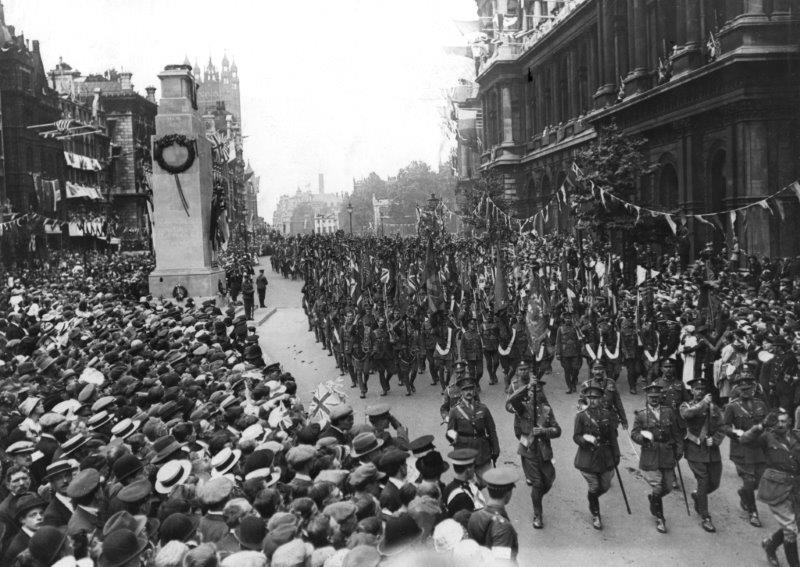This month in history: Peace Day, July 1919
 To celebrate and mark the end of World War 1, a Bank Holiday was declared in Britain,
having been decided by a committee chaired by Lord Curzon, foreign secretary (KG,
Gazette issue 28547):
To celebrate and mark the end of World War 1, a Bank Holiday was declared in Britain,
having been decided by a committee chaired by Lord Curzon, foreign secretary (KG,
Gazette issue 28547):
‘We, considering that, with a view to the more wide-spread and general celebration of the Conclusion of Peace, it is desirable that Saturday, the Nineteenth day of July instant, should be observed as a Bank Holiday and as a Public Holiday throughout the United Kingdom’
Though November 1918 had marked the end of fighting on the Western Front, negotiations were to continue at the Paris Peace Conference until 1920, with the ‘high and tremendous task of settling the peace terms’ (Gazette issue 31223). The Treaty of Versailles was not signed until June 1919 (Gazette issue 31427).
Once negotiations were nearing their end and ‘proper peace’ was within sight, a peace committee was set up with the intention of deciding how Britain would publically mark the end of the war and do justice to the widespread feelings of jubilation.
The committee first met on 9 May 1919. Its members, led by Curzon, at first considered a 4-day August celebration, including a river pageant. But this was simplified and reduced to a single day on 19 July, under the perhaps more reserved direction of David Lloyd George, prime minister (OM, Gazette issue 31506).
Though the prevailing mood was in the main triumphant, the proposal of a day of celebration and victory parade attracted some criticism from those who felt that the money would be better spent supporting returning servicemen who faced physical and mental injuries, and who needed work and a place to live. The Unemployment Insurance Act of 1920 (Gazette issue 32118) attempted to address this by raising the amount of contributions given and the number of workers who could claim.
On the morning of the 19th, thousands gathered in London, having arrived overnight. It was a spectacle never seen before, with nearly 15,000 troops taking part in the victory parade, led by Allied commanders Pershing (head of the US Expeditionary Force), Foch (Allied supreme commander) and Haig (British commander in chief), who saluted fallen comrades. Bands played, and the central parks of London hosted performances and entertained the crowds.
That morning, King George V issued a message: 'To these, the sick and wounded who cannot take part in the festival of victory, I send out greetings and bid them good cheer, assuring them that the wounds and scars so honourable in themselves, inspire in the hearts of their fellow countrymen the warmest feelings of gratitude and respect.'
A monument to those killed and wounded was unveiled in Whitehall, to mark the end point of the victory parade, soon to be decorated with flower wreaths. Architect Sir Edwin Lutyens (Gazette issue 30607) was commissioned by Lloyd George at the start of the month to design the monument, and had just 2 weeks to create a piece befitting of the memory of the fallen. Though it was a temporary wood and plaster construction, another made from Portland stone was to replace it in 1920, which still stands today.
Though the main spectacle was in London, other celebrations organised by local authorities and communities took place in cities, towns and villages across the country.
Image: the British contingent of the Victory Parade in Whitehall passing the Cenotaph on Peace Day, 19 July 1919 © Illustrated London News Ltd/Mary Evans
